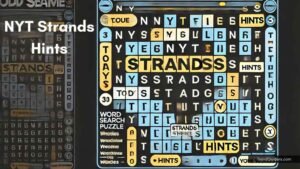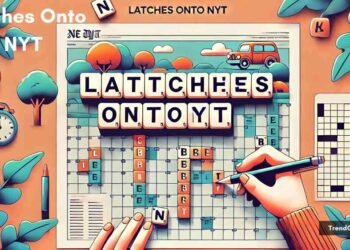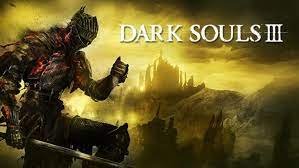Introduction to NYT Strands Hints
Hints belong to the New York Times (NYT) in the wide category of crossword puzzles and word games. These hints are intended to help solvers to solve those hard puzzles and uncover the answers to crossword puzzles. In as much as it can be used by what can be referred to as occasional crossword solvers, comprehending how to maximize on the NYT Strands Hints increases the potential enjoyable experiences solvers who work through puzzles. Thus, to outline the key points regarding the use of NYT Strands Hints for constructing the texts that reach the audience’s heart, as well as some practical pieces of advice, this article is organized as follows:
What are these NYT Strands hints?
NYT Strands Hints are clues connected to the New York Times crossword puzzles’ culture. These hints are allowed to assist solvers in going through fuzzy clues and get to the answers quicker. The hints are indeed well placed and developed in such a way that an average user is led through the solutions without providing him with the solution directly. They are in between the solver’s current state of knowledge and the solution, and they provide gentle nudges and extra information.
Purpose and Benefits
The general function of NYT Strands Hints is also to help people sort out some issues in crossword puzzles. They help in:
- Clarifying Clues: Clearing up more information about a particular clue or rewording a particularly complicated clue.
Offering Guidance: Guiding the solvers into the proper way of thinking without immediately giving out the correct solution. - Enhancing the Experience: Helping the solving process to be not only more fun but also less frustrating only if help is needed to complete the operations.
Understanding the Hint System
NYT Strands Hints are often given in such a form that the patient and doctor has to decipher. They may be general versions of the same word, related words, or parts of a phrase that helps you to get to the right answer. It is equally important to learn how these hints should be taken so that the student is in a good position to solve a problem.

Tips for Interpreting Hints
- Contextual Clues: This will be through observing the context provided to you by the hint. Drawing the attention to the clue together with the hint sometimes makes understanding of what is expected to be done easier.
- Word Associations: If the provided clue has a possibility of multiple answers, then other words that can be used to describe it should be used. For example, if the hint refers to an antonym of a word it could be words like ‘‘happy’’ , other choices could be ‘‘joyful’’ or ‘‘cheerful. ’’
- Partial Answers: Moreover, hints contain the partial answer or some of the letters. Below, are clues that can be used to complete the gaps in the puzzle.
- Cross-Referencing: Verify the correctness of the hint with relations to other clues or answers placed in the puzzle. The cross-referencing can help to give more background information to the search and increases the probability of the correct guesses.
Avoid Over-Reliance
There are hints in NYT which can be somewhat useful, but they put less hardcore and destroy the fun of completing the puzzle in my opinion. It then means that hints should be used as a form of help and not as support. Ask as few clues as possible at first and use hints only if it is really necessary.
Synonym Hints
Options offer words that are synonymous to the clue. For instance, if the clue given is “elated” and the hint implies “ecstatic,” then the answer can be deduced as – “ecstatic” is to “elated” as this is a way of affirming the two are synonyms.
Definition Hints
Definition hints are more straightforward in a way by providing a definition of a part of the clue. If the clue is “a large body of water,” and the hint is “ocean, ” then it will be a direct guess because “ocean,” is the answer.
Wordplay Hints
Wordplay hints are implication of puns, anagram or any single word play of some sort. These hints are more figurative in their nature and therefore demand slightly more lateral thinking. For example, if the clue given is “bovine animal” and hint provided is “moos in the barn,” the answer could possibly be “cow.
Letter Hints
Spelling assistance is offered to the competitor and it is in this assistance, that clues can refer to certain letters or certain patterns to complete a word. For instance given the clue ‘top of the cake”, and hint: the first letter of the answer is ‘i”. Then, the answer could be ‘icing’.
Newspaper Article: NYT Strand Hints – Tips and Approaches
- Practice Regularly: Crosswording is advantageous in strengthening one’s ability to interpret hints since it is a form of practice that is common. Each solved hint will give insight on the usual hints coupled with the possible strategies to use.
- Study Common Clue Types: Become acquainted with reference clue types and the most frequently used clues to them. Awareness of these patterns reduces the time spent on hints by allowing you to quickly deciphers the messages.
- Use Crossword Dictionaries: These types of word lists can also be useful in solving clues and in interpreting hints. It gives lists of synonyms, other forms of the word and other relevant details.
- Join Crossword Communities: Proceeding to work with crossword puzzles societies, either in real life or internet-based ones, can assist in the realisation of some approaches to the crossword as well as indications to hints. Some of these communities also contain advice and different methods of working on the puzzles to players.
Perusing the Advantages of Implementing NYT Strands Hints
- Enhanced Problem-Solving Skills: Therefore, one can enhance their problem-solving skills when utilizing hints. When you have to work with hints, you fine tune that part of your brain that deals with problem solving and therefore усладить your analytical aptitude.
- Increased Enjoyment: Hints can make the crossword puzzles more fun by avoiding frustrations. They help solve the problem and maintain the appeal of the solving process since they allow to deal with the challenges.
- Learning Opportunity: Hints can present new lexis in terms of vocabulary or new ideas in terms of terminology or concepts. If the actual answer cannot be derived from the clue, then by paying attention to hints, one can enrich one’s knowledge base and vocabulary and that would always help in solving future puzzles.
Challenges and Limitations
- Over-Reliance on Hints: As it has been stressed above, the excessive use of those hints does not let enhance the level of difficulty and thus the level of engagement in solving the puzzles. Therefore, it is necessary to handle hints and students’ problem-solving capabilities as an effective combined strategy.
- Hint Ambiguity: Some of the hints may be vague such that one cannot really understand the actual intention of the hint. This is where having one’s back to the body come into a useful thought process as multiple interpretations can be given and the information cross-referenced with other clues.
- Keeping Up with Trends: Taken altogether, this established that crossword puzzle trends and hint styles can change. The key tactics help to maintain proficiency on the understanding of the NYT Strands Hints when updated with the latest trends and hint strategies.
Conclusion
NYT Strands Hints are a helpful aid for crossword solvers providing advice and assistance when solving the more difficult puzzles. Thus, recognizing the types of hints and employing the most efficient approaches can improve your solving abilities and increase your pleasure from the crossword puzzle. More advanced aspects that can be applied in learning and understanding hints are getting into the practice of doing crosswords often, knowing some frequently used hints, and interacting with the crossword social groups. Experience the fight and have fun, let NYT Strands Hints be your helpful guide on your way to solving NY times crossword puzzles.
FAQ’s:
Find comprehensive answers to the most common questions about our offerings, helping you get the information you need quickly and easily.
Q.1 What are Hints related to NYT Strands?
NYT Strands Hints are tips that the New York Times crossword puzzles leave behind to help the solvers. They suggest further help students and readers to understand the scriptures used to present complicated clues.
Q.2 What is the proper way of utilizing NYT Strands Hints?
The following guidelines need to be followed when using NYT Strands Hints: You need to look at the context of the hint given, think about the similar words and letters hints should be used in the case of missing one or more letters. Do not depend much on hints and attempt to solve the clues by your own as much as possible.
Q.3 Do NYT Strands Hints apply to all the crossword puzzles?
In most New York Times crossword puzzles, Hints are reported as NYT Strands. To see whether hints are given for a particular puzzle, refer to the puzzle or the hints part of the puzzle.
Q.4 Can I get NYT Strands Hints for free?
To gain the NYT Strands Hints normally one has to pay to subscribe or buy the New York Times crossword puzzle. Freed Versions could be useful to get some hints of the real functionality of the program.
Q.5 What other resources are there in relation to solving crossword puzzles?
Besides NYT Strands Hints, the crossword dictionaries, online forums, crossword puzzle applications can also be used for the extra aids and help in solving the crossword puzzles. Crossword forums are also equally useful since it can also offer strategies and suggestions from the members of the crossword forums.
Q.6 How do I get better in crossword puzzles?
There are several effective ways to enhance the solutions of crossword puzzles, to learn most common types of clues, to use crossword dictionaries and to participate in crossword-related forums. The other tip is improving one’s skills in recognition of hint patterns and solving strategies.















